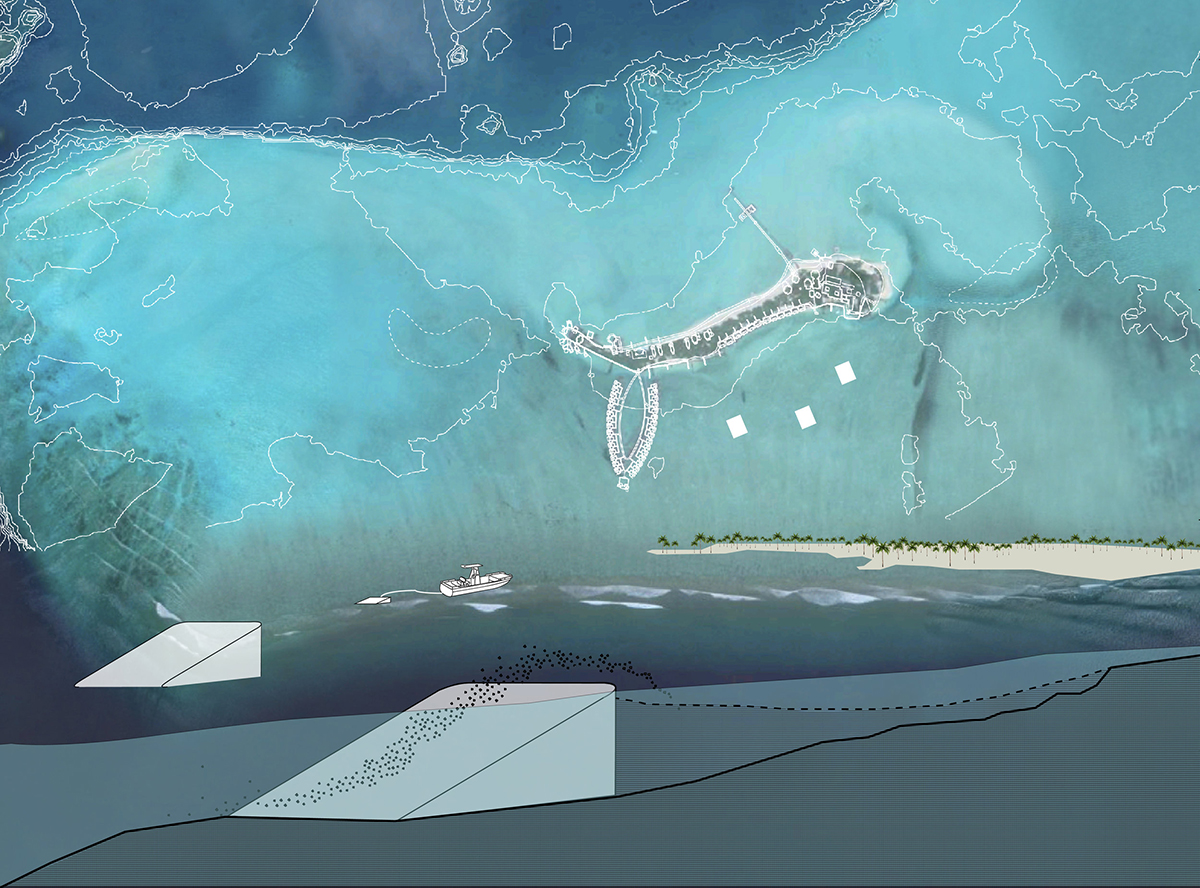Human-driven climate change is threatening the coastal areas that nearly half of the world calls home with rising sea levels and increasingly severe storms. While dams, barriers, dredging, and artificial reefs are sometimes used to address these “forces of nature,” these strategies come with their own drawbacks and, in some cases, significant environmental and ecological impacts.
Researchers at MIT’s Self-Assembly Lab, in collaboration with Invena, a Maldivian organization, have proposed a solution that is inspired by nature. Called “Growing Islands,” their project uses wave energy to grow sand formations in a way that mimics natural sand accumulation. The hope is that over time, sand can “grow” into new islands, beaches, and barriers that can protect coasts from erosion and save islands like the Maldives that are under threat of disappearing under rising seas.

The Growing Islands project uses sand-filled 10-foot-by-10-foot canvas bladders with biodegradable 3D-printed interiors that use energy generated by waves to create new protective sand formations to rebuild beaches and act as “adaptable artificial reefs,” according to the lab’s website. The site goes on to explain: “By harnessing wave forces to accelerate and guide the accumulation of sand in strategic locations, and adapting the placement of the devices to seasonal changes and storm direction, our approach aims to naturally and sustainably reshape sand topographies using the forces of nature.”
This past winter, the lab and Invena installed these devices off the Maldivian coast and are collecting data by way of on-the-ground measurements, drones, and satellite imagery. They hope to create an affordable, sustainable solution to protecting island nations—many under threat of disappearance—and coastal towns and cities from encroaching water. More dramatically, the lab also imagines that this process could be leveraged at a larger scale to create entire new islands over time.
